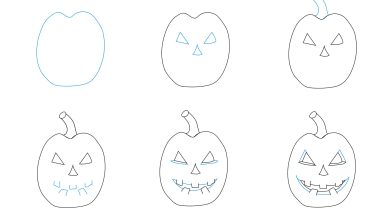Good and Bad Crop Associations in the Garden: Examples
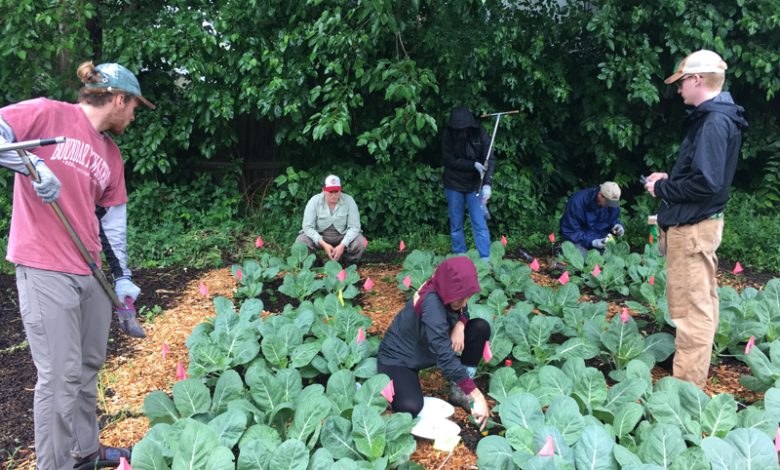
Hello everyone! Here’s a new article on beneficial and harmful crop associations that are important to know to successfully grow an organic garden.
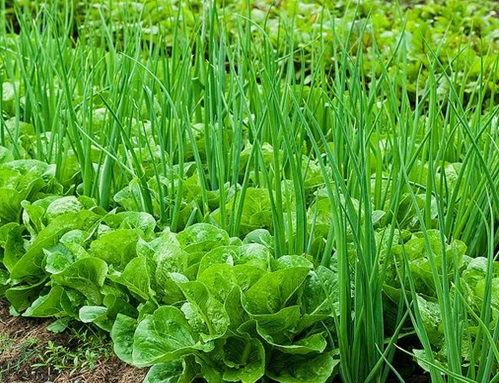
Crop associations in the garden
As we saw in the entry on What is organic farming. Techniques in ecological urban gardens that I published a long time ago, this type of agriculture has a series of purposes, many of them related to the improvement and care of the environment and health. To achieve these ends, several practices are used (which you can also see in that post), and one of them is to take advantage of the positive effects of beneficial crop associations. That is, putting together crops «that get along well» or that have beneficial effects on the others.
In another post about Crop Association we already saw some useful tips and beneficial and harmful crop associations for each plant, but this time I am going to be a little more specific so that you can easily choose a good association for your organic garden.
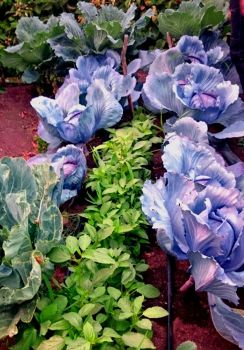
Advantages of crop associations in the orchard
- It makes better use of floor space and light.Hence, species that grow horizontally are often planted together with others that grow vertically. Example: plant lettuce together with onions, as Antonio did in his garden, of which I leave you this image. A good crop association or beneficial association is that of onions and lettuce.
- It reduces the proliferation of weeds since the land is occupied more completely.
- They improve the conditions of the substrate and take better advantage of the nutrients.Some species are soil improvers and this favors that others that «exhaust» the soil more or need more nutrients can be used.
- Pests are fought because the mixture of plants “confuses” pests, preventing them from easily locating their host plants, or because crops that repel pests are associated with others that could be affected by them.
- It improves the aesthetic aspect of the orchard as it creates a landscape full of colors and different shapes.
Examples of beneficial crop associations
1. LEGUMES + CORN + CUCURBITACEA (Pre-Columbian Association)
This is an association that the Maya of the Yucatan used thousands of years ago. It consists of sowing legumes (such as green beans, beans, etc.), together with grasses (corn, sorghum…) and cucurbits (pumpkin, courgette, melon…). The best known example is the bean, corn and pumpkin. It is also known as «the three sisters».
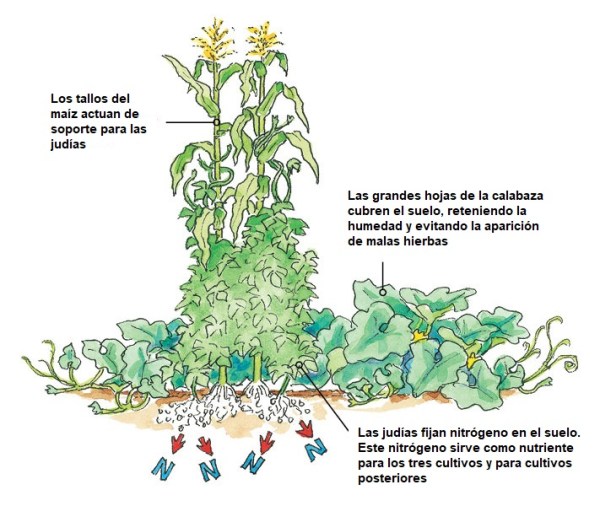
The corn will serve as a guardian for the legume, since it will climb its stem. In exchange, the bean plant will fix nitrogen in the soil that will be absorbed by the corn and, in addition, will repel worms that attack it. Both will provide some shade for cucurbits, which don’t like too much sun. Pumpkins, being «creeping» plants, will cover the free spaces in the ground, preventing weeds and retaining moisture.
The crop rotation technique is very useful and recommended in the organic garden. And, if you follow it, the following year you must plant some leafy vegetables (cabbage, lettuce, chard, spinach…) or root vegetables (garlic, onion, carrot, potato…) in the space where you had the pre-Columbian association.
2. ONION + GARLIC + TOMATO
Onions and garlic prevent diseases that can affect tomatoes and also facilitate their growth.
The following year you can rotate and put leafy vegetables or green manure.
3. LEEK + CARROT + ONION
Highly recommended if you have crops in your garden that may be affected by the whitefly since these three vegetables repel it. Also the leek repels the carrot fly and vice versa. In addition, the floor will be completely covered, as you can see in the photo, and the space will be better used.
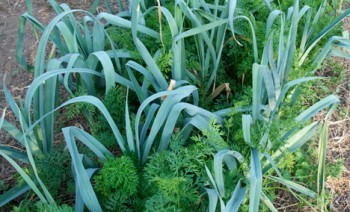
Following the technique of crop rotation, the following year you can put leafy vegetables or solanaceous vegetables (aubergine, pepper, tomato…) on that terrace.
4. SPINACH + LEGUMES
The legumes will provide the soil with the nutrients that the spinach needs (this is a fairly demanding vegetable).
As after the legumes the substrate will be rich in nitrogen, the following year you can rotate and plant species with higher requirements such as cruciferous or fruit vegetables (cucurbits, nightshades…).
5. LETTUCE + LEEKS
Or lettuce with other root vegetables such as onions or carrots. The leek provides biological control, attracting beneficial insects that can attack pest insects. In addition, this way root and leaf vegetables are combined, so that the space in the substrate is better used.
6. FLOWERS AND AROMATICS + VEGETABLES
Flowering plants (such as tagetes, calendula, nasturtium, etc.) and aromatic plants (sage, lavender, rosemary, thyme…) have many advantages. Not only do they brighten the garden with their colors, many also help fight pests and diseases or enhance the flavor and growth of crops. You have some examples in the entries Flowers in the garden and Aromatics in the garden: which ones and why.
Bad or harmful crop associations to avoid
You should not mix vegetables that compete with each other or “incompatible” crops on the same bed or cultivation table. Some examples of non-recommended crop associations are:
- Cucurbits with tomato.
- Eggplant with zucchini.
- Garlic or onion with legumes.
- Sunflower with melon or lettuce.
It is also important to avoid putting vegetables from the same family together, as they have similar requirements and are often affected by the same pests and diseases, so these attacks will be enhanced.
If you want to know more about crop associations and many other compatible and incompatible pairs, take a look at this post: Association of crops in the garden, compatibility between plants

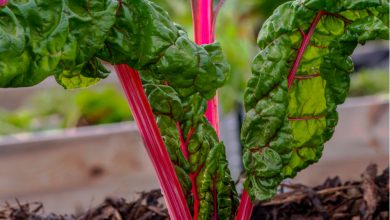
![Photo of Precision Agriculture: [Concept, Uses, Examples]](https://www.complete-gardening.com/wp-content/uploads/2022/08/precision-agriculture-concept-uses-examples-390x220.png)
![Photo of Terraces: [Concept and Types] + How to Prepare One](https://www.complete-gardening.com/wp-content/uploads/2022/08/terraces-concept-and-types-how-to-prepare-one-390x220.jpg)
